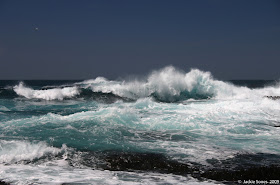Photos of a Ruff (Philomachus pugnax) taken at the north end of Bodega Harbor on 30 April 2012 at ~ 6 p.m.
This bird was first spotted in Bodega Harbor on 21 April 2012 and has been seen occasionally since then. I was excited to get some photos as Ruffs are rare migrants in Sonoma County. They are an Old World
species, breeding in northern Eurasia and wintering mainly in Africa. The
Birds of Sonoma County lists only 9 records (mostly in fall) between 1961 and 2000.
Ruffs are medium-sized sandpipers (~10-12" long). They generally have a small-headed and large-bodied appearance, with a medium length bill (slightly decurved). Legs are variable in color, but yellow in this individual. Upper feathers have dark bars and distinct pale fringes.
Ruff in center, flanked by Marbled Godwits (see above and below).
Below, note the relatively long
yellow legs. Most of the other birds are Marbled Godwits. There are
also three Red Knots in the foreground (gray backs and red breasts) and two Short-billed Dowitchers, one directly behind and another to the far right of the Ruff
(shorter and darker brown).
The Ruff spent a lot of time resting. Can you find it in the next photo?
It's on the far right, with a Red Knot in the foreground and Marbled Godwits to the left.
In the photo below there are six species of shorebirds — along with the Ruff there are Marbled
Godwits, Willets, Red Knots, Short-billed Dowitchers, and a Dunlin. Can you pick out the Ruff?
The Ruff is
just to the left of the largest rock.


















































